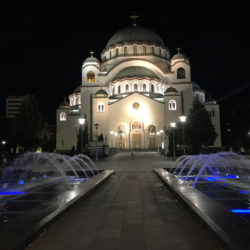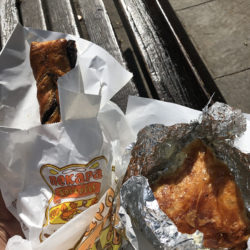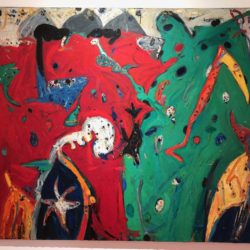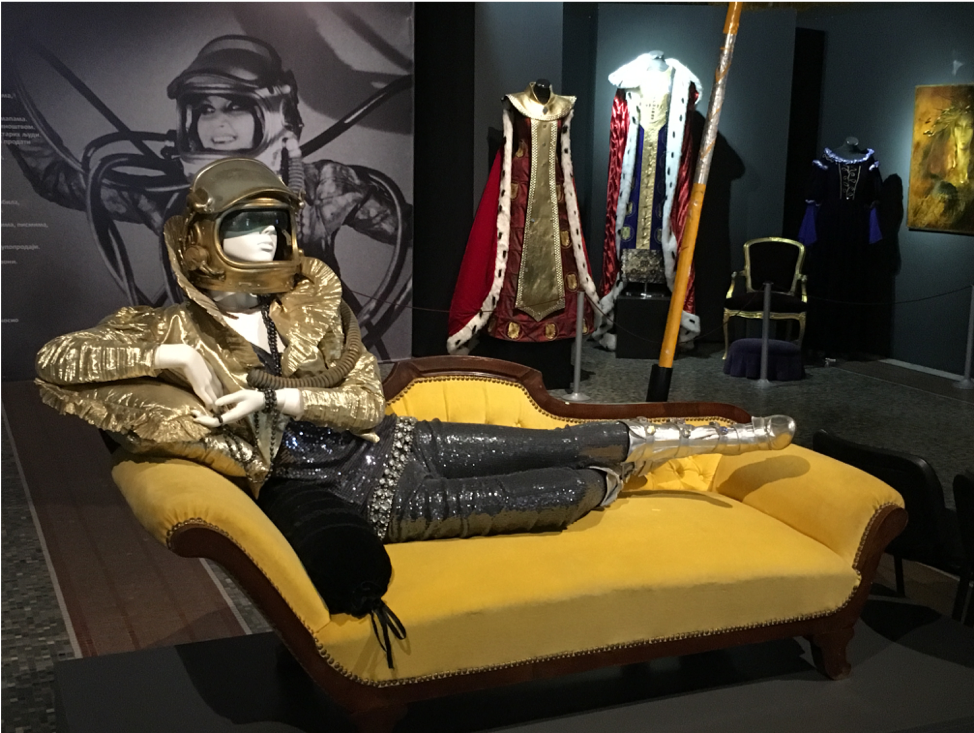
The National Museum of Serbia has been closed for renovations for well over ten years now. There apparently used to be a countdown clock ticking down to the museum’s re-opening, but even that glimmer of hope was removed several years ago. The outer facade has been restored, which gave some people I spoke to hope that the long-awaited day may actually almost be here. But in the meantime, there are still some other very worthwhile museums to check out in Serbia’s center of history and culture.
Музеј историје Југославије (Museum of Yugoslav History)
If you only have time for one museum, the choice is easy: Музеј историје Југославије (Museum of Yugoslav History), which contains Tito’s grave in the Кућа цвећа (House of Flowers). The museum is divided into three parts, plus a sculpture garden; a ticket covering all areas of the complex can be purchased at the largest building, the Музеј 25. мај (May 25 Museum). I was told by some people at my hostel that the museum was outside the city center and it would be easier to get there by tram, but I think they over exaggerated the distance as I found the walk to be invigorating and pleasant.
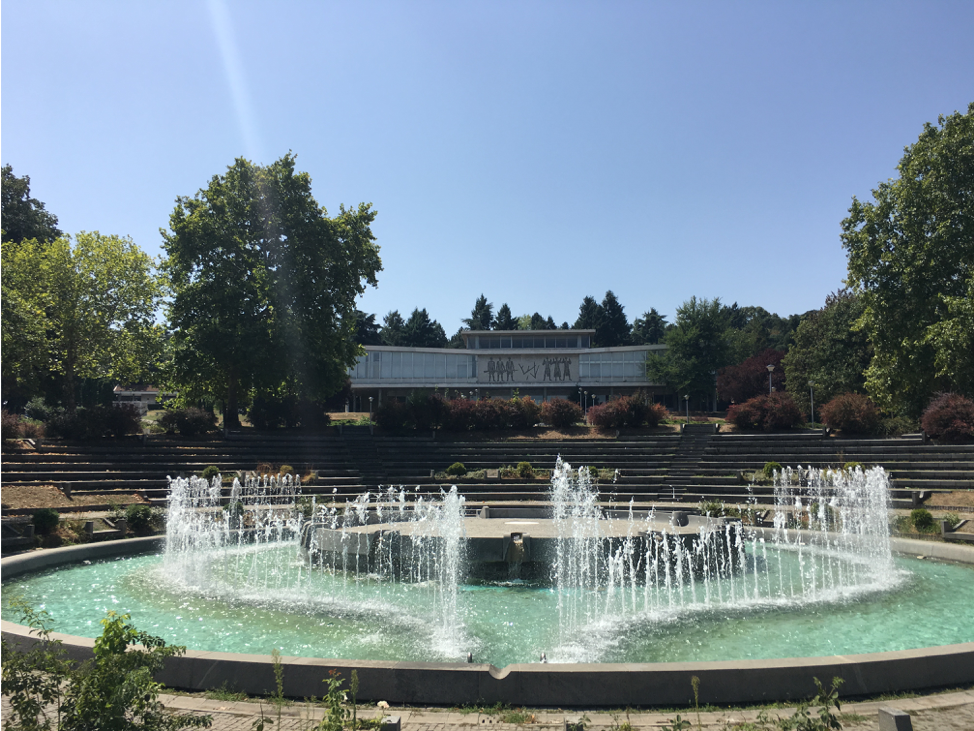
Before I go any further, I need to say a few words about Josip Broz Tito- just “Tito” for short- the first President of Yugoslavia, who ruled the country from 1953 until his death on May 4, 1980. Tito is the type of historical figure you could read several books about and still not have a grasp on the complexities and paradoxes of his tenure as leader, as well as his relationship with the Yugoslav people. Some label him a dictator (or even a “benevolent dictator”), while others view him as a hero and great unifier. One person told me that he represented a time of peace, but an artificial one, for as soon as he died the country spiraled into political and economic chaos that led to war and the disintegration of Yugoslavia. There is definitely a cult of personality that surrounds the former president, and one this is for sure: you cannot understand Serbian or Yugoslav history without attempting to understand Tito.
May 25th was when Tito officially celebrated his birthday, though many historians believe he was actually born on May 7th. Tito declared May 25th a national holiday, and the Музеј 25. мај opened in 1962 as part of the celebration for his 70th birthday. May 25th was also known as Youth Day and the conclusion of the Relay for Youth, an event where a baton was carried throughout all the major cities of Yugoslavia, occurred every year on this day until 1988, eight years after Tito’s death. Citizens from all over crafted personalized batons in honor of Tito and the Стари музеј (Old Museum) has a collection of over 20,000 batons.
When I visited, the Музеј 25. мај had only one exhibit open, Tito in Africa: Picturing Solidarity, which featured photos, videos and gifts received by Tito and his wife, Jovanka during their numerous state visits with African leaders. Tito was a founding member of the Non-aligned Movement, established in 1961, and acted as a network for third-world countries to unite, with a prime anti-colonialism focus in Africa. Tito traveled to nearly every African nation, some dozens of times, building relationships with leaders and creating economic ties through their industries. The visits were filled with much pomp and circumstance- parades, galas, speeches and gifts were de riguer- but I got a sense that these state missions meant a lot more to Tito than this surface exhibitions of praise.

Кућа цвећа (House of Flowers) was built in 1975 and became Tito’s residence for the last two years of his life before his death in 1980, a few days shy of his 88th birthday. He died in Ljubljana on May 4; the state funeral was held in Belgrade on May 8 and is still regarded as the largest and most attended state funeral in world history. 128 countries sent state delegations; 4 kings, 31 presidents, 6 princes, 22 prime ministers and 47 ministers of foreign affairs were in attendance, as well as countless mourners who lined the streets for a chance to pay their respects. Today his tomb is guarded by soldiers and has a few exhibits in the side rooms where he once had a study and living quarters.

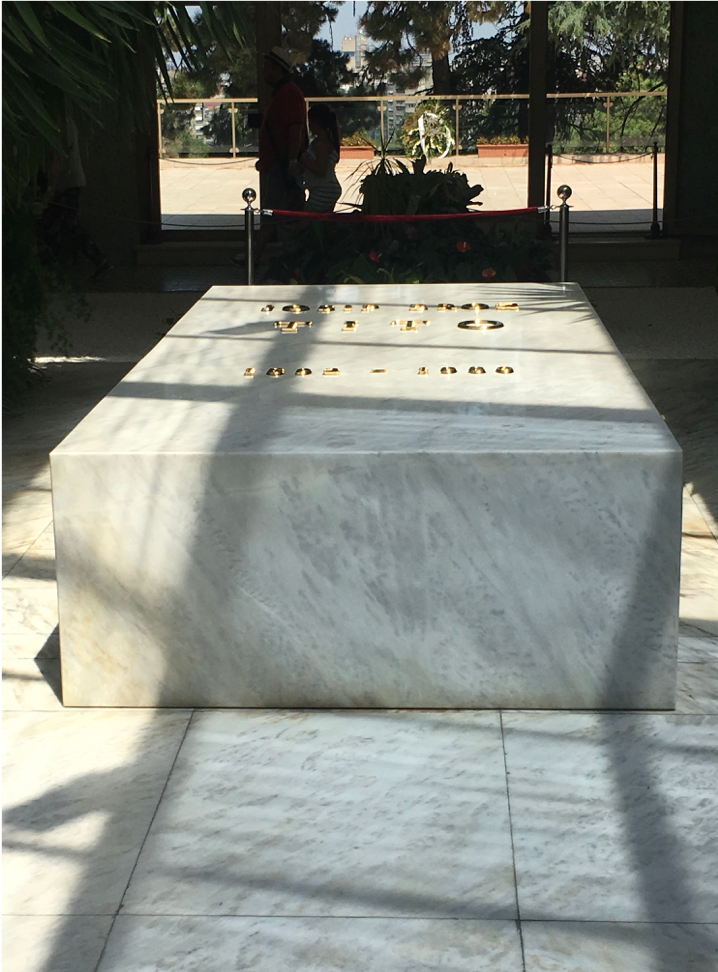
Immediately behind the Кућа цвећа is the Парк скулптура (Sculpture Park). Many of the pieces were once at Tito’s official residence, but have since been moved to the park after his death.
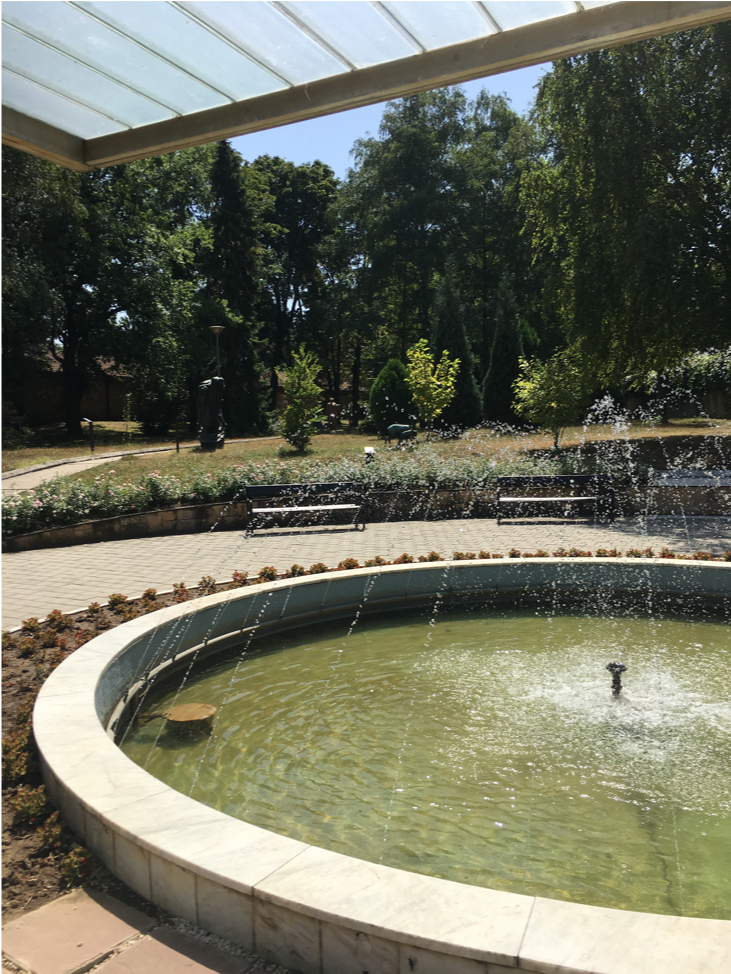
The last building of the museum complex is the Стари музеј (Old Museum), which began its life in the 1960’s as a storage facility for all the gifts Tito received from various world leaders. Now, in addition to displaying many of these gifts and the previously mentioned batons, the museum has a large collection of Yugoslav propaganda. By their own mission statement its “current role is to be a place where an open process of critical self-reflection and reinterpretation of the collections…can unfold.” This is refreshing and certainly a change from the official history books that Tito could do no wrong. Of all the people of the former Yugoslavia, I found Serbians to have the most love and nostalgia for the days of Tito.
Историјски музеј Србије (Historical Museum of Serbia)
Back in Belgrade’s city center you will find the Историјски музеј Србије (Historical Museum of Serbia). When I visited, there didn’t appear to any permanent collection on display, but there were two massive special exhibition spaces that rotate various showcases on a fairly regular basis. I read good things about past exhibits, so I decided to give the current two a try: Serbia in WWI (1915-1916) and a tribute to Olja Ivanjicki, a Serbian artist, poet and fashion designer.
The first exhibit went into examined Serbia’s involvement in The Great War with extreme detail, but unless you already had a strong understanding of the First World War, the narrow focus of 1915-1916 made it was hard for me to see the forest for the trees.
On the other hand, I was extremely taken by the exhibit on Olja Ivanjicki. She was born in 1931 and studied at the Academy of Fine Arts in Belgrade in the late 1950’s. She was a founding member (and only female) of the Mediala group, a collective of surrealist Serbian artists, often incorporating political statements in their works. Later she began designing clothing and shoes and also released some poetry. Not only was the art and fashion breathtaking, but the curators did an excellent job utilizing the space. When I return to Belgrade in a few months I will definitely check back in with the Историјски музеј Србије for their latest special exhibits.
Some looks at the great Olja Ivanjicki’s work:


Етнографски музеј (Ethnographic Museum)
The Етнографски музеј (Ethnographic Museum) is a quaint little museum, but worth a quick visit if you’re interested in traditional Serbian village life. The ground floor is comprised of authentic costumes, worn for holidays, weddings and other important events. If you’re like my mother and have an aptitude for sewing then some of the embroidery techniques are impressive. The top floor gives an overview of turn of century commerce and housing in rural Serbia. I only spent about 30 minutes here, but all signs were in both Serbian and English, so you could take your time if the subject matter is of greater interest to you.
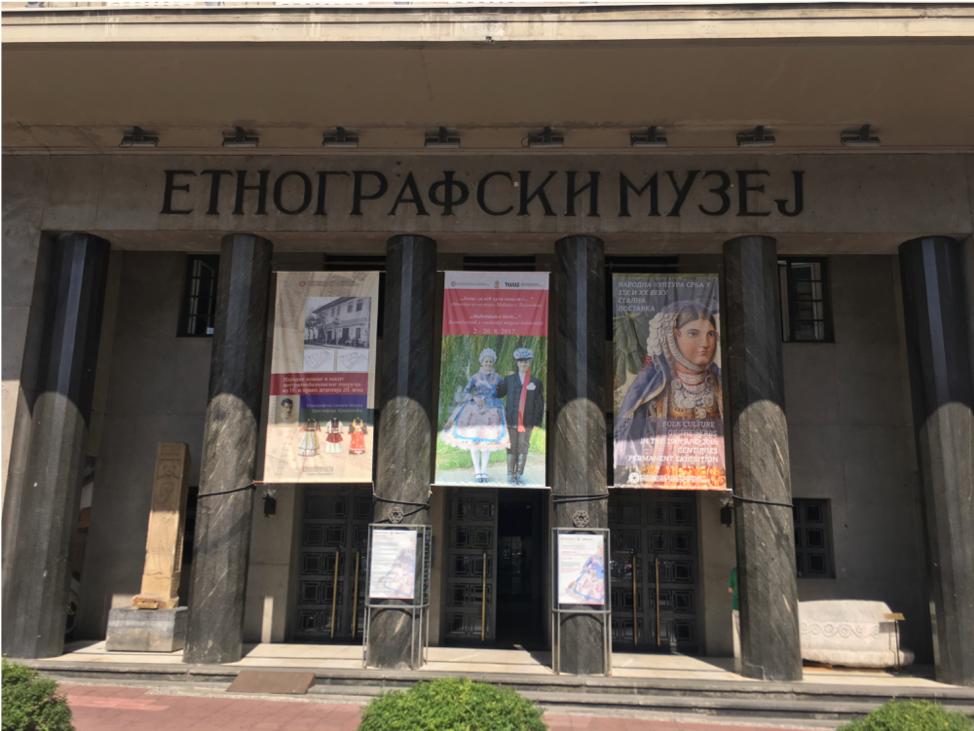

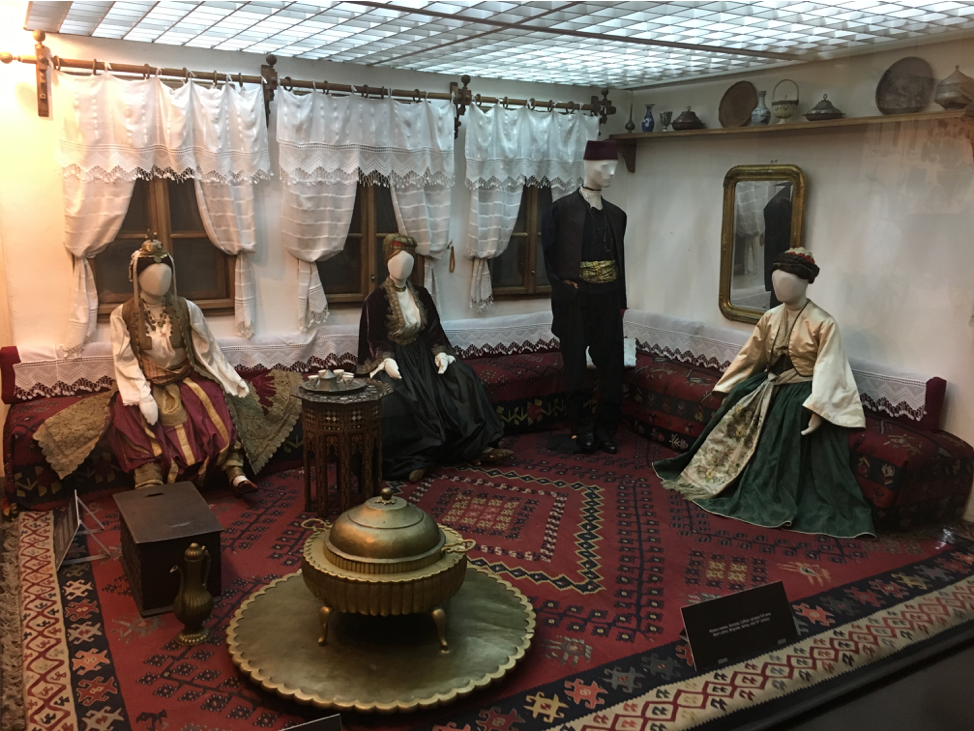
Никола Тесла музеј (Nikola Tesla Museum)
This museum may look little, but you it can still give you a jolt. Literally. Nikola Tesla was born in 1856 in modern day Croatia and was one of the great scientific minds of the past 150 years. He invented/discovered how alternating current systems work, creating the induction motor and rotating magnetic fields. He obtained over 300 patents over the course of his life and many of his inventions are still being used in their unmodified state to this day. Of course, most people know Tesla’s name today from the electric car company named after him, but his name is can be found all over the world- even just a few blocks from where I live in NYC, a portion of West 40th Street is named after him.
The museum itself is only four small rooms, and admittedly held little interest except for he golden sphere that contains Tesla’s ashes. The gem of the museum is the live presentations that are held four times a day in English by science students form a nearby university. After a brief video about Tesla’s life, the student guide demonstrated some of Tesla’s greatest inventions, all with the help of victims, I mean volunteers from the group. (Everyone was so scared of getting zapped that I was able to volunteer for each of the experiments!) It was a lot of fun and definitely worth the effort it took to arrange my schedule to be there for one of the presentations. If you can’t make it, the museum is honestly best skipped.


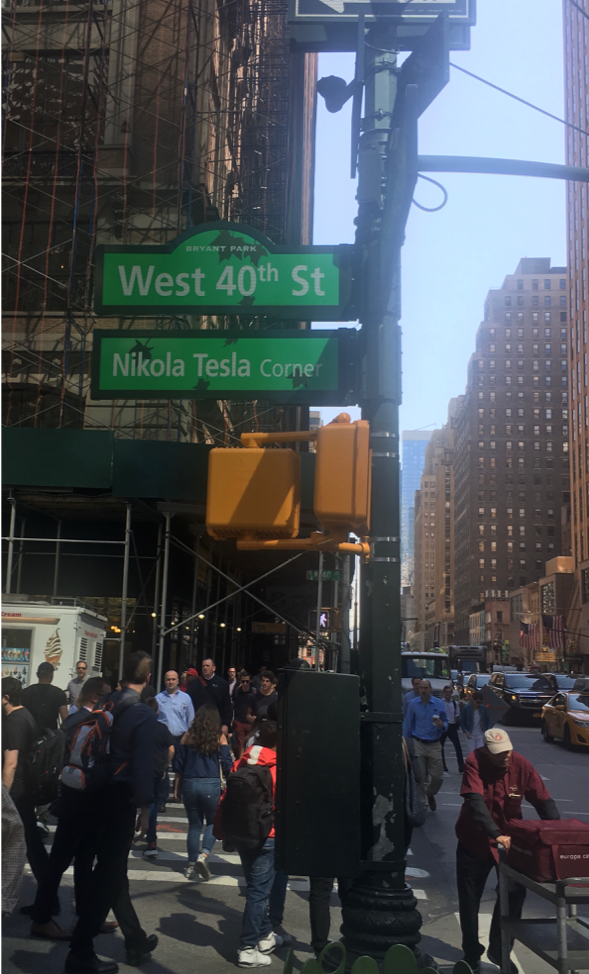
I’m not at all suggesting that you should, or even could, see all these museums in one day, but if you find yourself with a week to spend in Belgrade, it would be well worth your time to learn about the history of Serbia and Yugoslavia while exploring the city.
